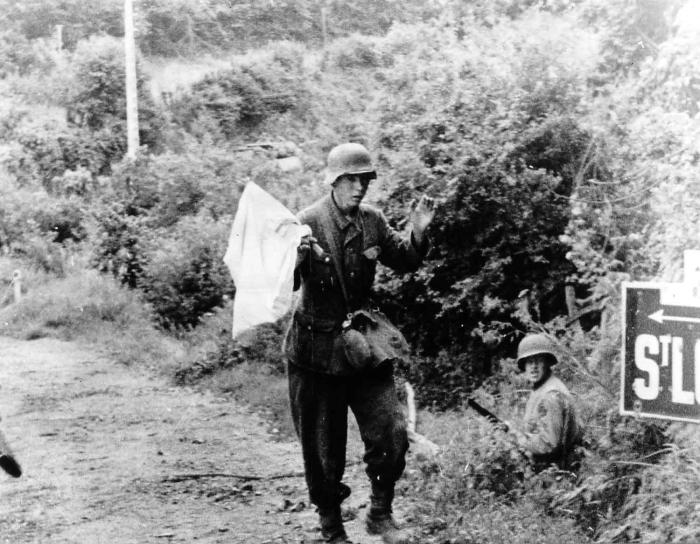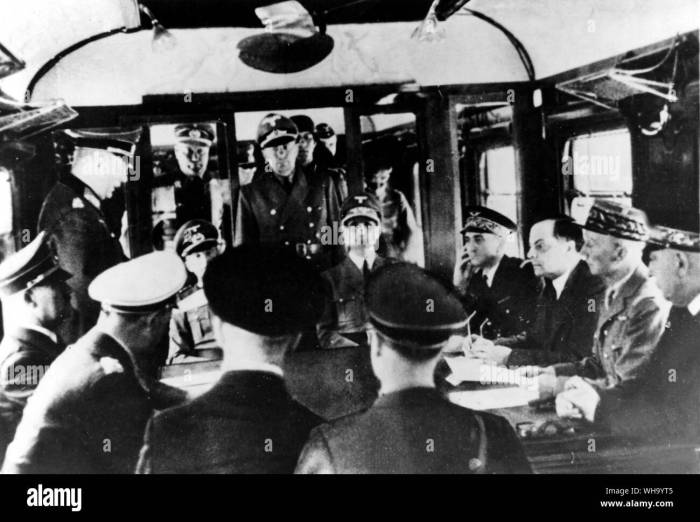World war 2 the surrender of france worksheet answer key – Unveiling the pivotal events leading to the Surrender of France in World War II, this comprehensive worksheet answer key embarks on a historical journey, shedding light on the strategic significance, military capabilities, and fateful decisions that shaped the course of the war.
Delving into the heart of the conflict, we explore the German invasion plan, key battles, and the French response, unraveling the reasons behind the rapid German advance and the ultimate surrender of France. The impact of this momentous event on the war and France’s legacy is meticulously examined, providing a profound understanding of its historical implications.
Historical Context of France’s Surrender in World War II
The surrender of France in June 1940 marked a turning point in World War II. France, a major European power, was defeated by Nazi Germany in just six weeks. This article explores the historical context, military strategies, and political factors that led to France’s surrender.
Strategic Importance of France
France held a crucial strategic position in Europe. Its borders with Germany, Italy, and Spain made it a potential staging ground for invasions of other countries. Additionally, France’s extensive colonial empire provided valuable resources and manpower.
Military Capabilities
In 1939, France possessed a large and well-equipped army. However, the French military was slow to modernize and had a defensive mindset. In contrast, Germany had invested heavily in its military and had developed innovative tactics and weapons.
The German Invasion of France

Fall Gelb
The German invasion of France, codenamed Fall Gelb, began on May 10, 1940. The German plan involved a massive attack through the Ardennes Forest, a region previously considered impassable for tanks.
Key Battles and Events
The invasion progressed rapidly, with German forces quickly breaking through French defenses. Key battles included the Battle of Sedan, where German panzers encircled and destroyed French divisions, and the Battle of Dunkirk, where British and French troops were evacuated to England.
Reasons for German Advance
The German advance was facilitated by several factors, including superior tactics, air superiority, and the surprise element. The French army was outmaneuvered and overwhelmed by the German Blitzkrieg strategy.
The French Response to the Invasion

Military Strategy, World war 2 the surrender of france worksheet answer key
The French military initially adopted a defensive strategy, relying on the Maginot Line, a system of fortifications along the German border. However, the German invasion through the Ardennes bypassed the Maginot Line, rendering it ineffective.
Political Factors
Political divisions and indecisiveness within the French government further weakened the country’s response to the invasion. Prime Minister Paul Reynaud faced opposition from within his own cabinet, and the government was slow to make crucial decisions.
The Surrender of France: World War 2 The Surrender Of France Worksheet Answer Key

Armistice Agreement
On June 22, 1940, France signed an armistice agreement with Germany. The terms of the armistice divided France into two zones: a German-occupied zone in the north and west, and a free zone in the south.
Impact on France and the War
The surrender of France had a profound impact on the country and the course of the war. It shattered French morale and led to the collapse of the Third Republic. The German occupation of France deprived the Allies of a major ally and opened up the possibility of an invasion of Britain.
Legacy
The surrender of France remains a controversial event in French history. It has been debated by historians and politicians for decades, with ongoing discussions about the military, political, and moral factors that led to France’s defeat.
Questions and Answers
What were the key reasons for the rapid German advance during the invasion of France?
The German Blitzkrieg tactics, superior air power, and the element of surprise played crucial roles in their swift advance.
How did the Maginot Line contribute to France’s defeat?
While the Maginot Line provided strong defenses along the French-German border, it left the northern flank vulnerable to German invasion through Belgium.
What were the terms of the armistice agreement between France and Germany?
France was divided into occupied and unoccupied zones, with Germany gaining control of significant territories and resources.